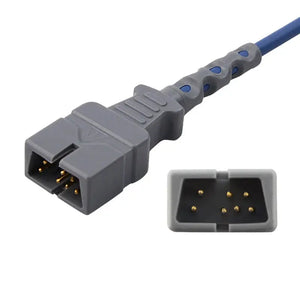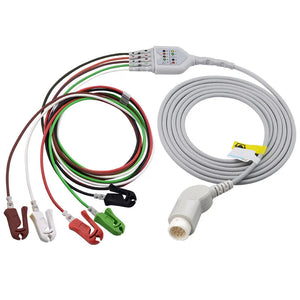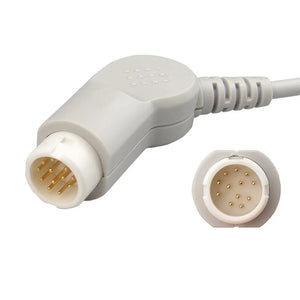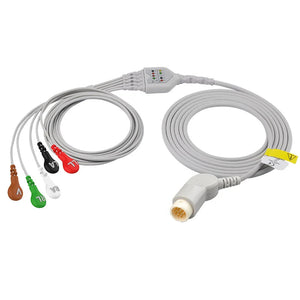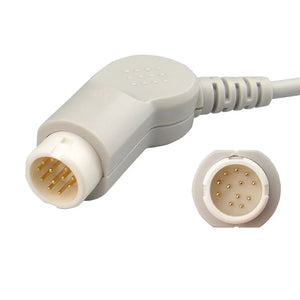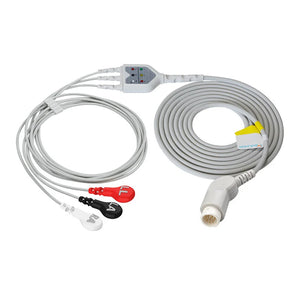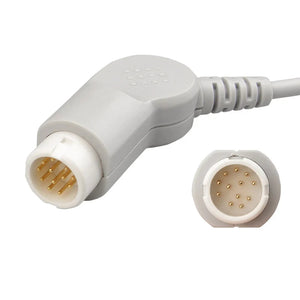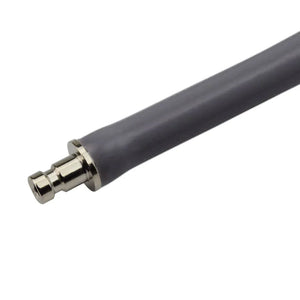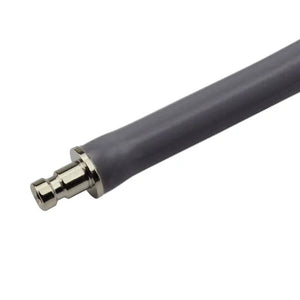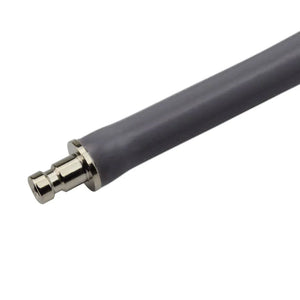Audience: U.S. hospitals, clinics, and home users • Focus: Reusability criteria, sizing accuracy, disinfection, and total cost of ownership (TCO)
Summary (TL;DR)
- Yes—reusable NIBP cuffs can be safely reused when cleaned and disinfected per IFU and facility policy.
- Choose the correct size (width ≈ 40% of arm circumference; bladder length ≈ 80%) to avoid measurement errors.
- Use a validated low-level disinfectant and follow contact time. Prevent liquid ingress into air pathways.
- For high-risk isolation or visible soil, consider disposable cuffs or dedicated cuffs.
- Over a year, reusable cuffs often lower TCO if cleaning workflow is established.
Reusable vs Disposable: Which Should You Choose?
| Scenario | Reusable Cuff | Disposable Cuff | Recommendation |
|---|---|---|---|
| Routine outpatient or inpatient rotation | Durable, lower long-term cost; requires SOP cleaning | Higher per-use cost; minimal reprocessing | Reusable with defined cleaning workflow |
| Contact isolation / C. diff / visible blood | Possible with upgraded protocol & dedicated device | Avoids cross-contamination; discard after use | Disposable or dedicated reusable |
| Home monitoring (single user) | Comfortable, long-lasting; easy wipe-down | Not necessary; cost adds up | Reusable |
| Mass screening / high-turnover events | Feasible with multiple sizes & rigorous wipe protocol | Simpler logistics; faster room turnover | Depends on staffing; consider disposable for speed |
Shop by type: Reusable Cuffs • Disposable Cuffs • Hoses • Connectors
Sizing & Fit: The #1 Factor for Accurate Readings
Pick size by measured arm circumference—not by body weight or appearance. As a rule of thumb, cuff width ≈ 40% of arm circumference and bladder length ≈ 80%. A wrong size can bias readings up or down.
| Arm Circumference | Suggested Cuff Size | Typical Use | Notes |
|---|---|---|---|
| Infant / Neonate ranges | Neonate 1–5 | NICU/PICU | Use dedicated neonatal cuffs |
| 18–26 cm | Small Adult | Smaller upper arms | Ensure artery marker alignment |
| 26–35 cm | Adult / Regular | Most adults | If borderline, size up and retest |
| 35–44 cm | Large Adult / Thigh | Large upper arms | Consider forearm/artery alignment if needed |
Safe Reuse Starts with the Right Cleaning & Disinfection
Reusable cuffs must be cleaned and then disinfected between patients per IFU and facility policy. Prevent liquid entry into the air pathway; fully dry before storage. For a step-by-step SOP with contact times and a compatibility chart, see: Ultimate Guide to Cleaning & Maintaining Reusable NIBP Cuffs.
Reuse Checklist
- Correct size verified
- Surface cleaned → low-level disinfection (contact time honored)
- No fluid ingress; fully dry
- Leak-check at ≥200 mmHg for 30 s
- Log date / operator / method
Do / Don’t
- Do align artery marker and fit snugly
- Do replace worn hook-and-loop or cracked hoses
- Don’t submerge ports unless IFU allows
- Don’t skip drying—moisture invites re-contamination
Compatibility: Hoses & Connectors That Just Work
Interfaces vary by monitor brand and series. Choose cuffs and hoses with the correct connectors to prevent leaks and reading errors.
| Monitor Brand / Series | Typical Connector | Compatible Collections |
|---|---|---|
| Philips (various series) | Quick-connect / specific adapters | Connectors • Hoses |
| GE, Mindray, etc. | Brand-specific hose ends | Reusable cuffs |
| Home BP Monitors | Single-tube common connectors | Cuffs • Hoses |
Tip: If unsure, send us your monitor model and current hose photo—we’ll match the right cuff and connector.
Inspection & Retirement Criteria
- Fabric/Seams: no tears, fraying, seam lift, delamination
- Hook-and-loop: holds firmly; replace if slipping after cleaning
- Print: size markers legible; artery arrow visible
- Hose/Connector: crack-free; O-rings intact; no fluid ingress
- Leak test: at 200 mmHg, ≤5 mmHg drop over 30 s
| Comparison and Analysis Table of Various Blood Pressure Cuff Applications | |||||
|---|---|---|---|---|---|
| Product Category | Comfort Cuff (Reusable) | Cuff without Bladder (Reusable) | Disposable Cuff (Non-Woven) | Disposable Neonatal Cuff (TPU) | Ambulatory Blood Pressure Cuff |
| Product Picture |  |
 |
 |
 |
 |
| Product Material | TPU, with bladder | Nylon cloth, without bladder | Non-woven fabric | TPU | Cotton material |
| Applicable Departments (Scenarios) | ICU, suitable for continuous monitoring | Outpatient, ER, inpatient, spot check, short-term monitoring | OR, ICU, cardiovascular, burns, infectious diseases | Neonatal department, fragile skin, infectious diseases | Cardiology, neurology, geriatrics, respiratory, OB/GYN |
| Product Advantages | Soft, comfortable, skin-friendly | Easy to clean, disinfect, durable | Disposable use, prevents cross-infection | Transparent, convenient for skin observation, latex-free | Soft breathable cotton, adjustable pull-ring, easy to clean TPU bladder |
Budget & TCO: When Does Reusable Win?
Reusable cuffs reduce waste and often lower cost after a few months of routine use—provided that cleaning is part of your workflow. For high-isolation wards or short-staffed environments, disposables may be cost-effective despite higher unit price.
| Cost Component | Reusable | Disposable |
|---|---|---|
| Unit price (per cuff) | Higher upfront | Lower |
| Reprocessing (time/consumables) | Yes (clean + disinfect) | No |
| Lifespan | Months–years (usage-dependent) | Single-patient |
| Waste & sustainability | Lower waste | Higher waste |
Need a tailored quote or SKU list by size? Contact us.
FAQ: Reusing NIBP Cuffs
Are reusable cuffs safe between patients?
Yes, if cleaned and low-level disinfected per IFU/facility policy, dried completely, and visually inspected before use.
When should I choose disposable cuffs?
For contact isolation, visible soil with high exposure risk, or when staffing/time constraints make reprocessing impractical.
What size should I pick?
Measure arm circumference and choose the matching range. If borderline, test one size up and confirm with repeat readings.
How do I prevent leaks?
Seat connectors fully, inspect O-rings, avoid fluid ingress during cleaning, and perform a quick 200-mmHg, 30-second leak test.
Related Guides & Products
Disclaimer
This article is informational and does not replace your device manufacturer’s Instructions for Use (IFU) or your facility’s infection-control policy. Always follow local regulations and clinical judgment.



